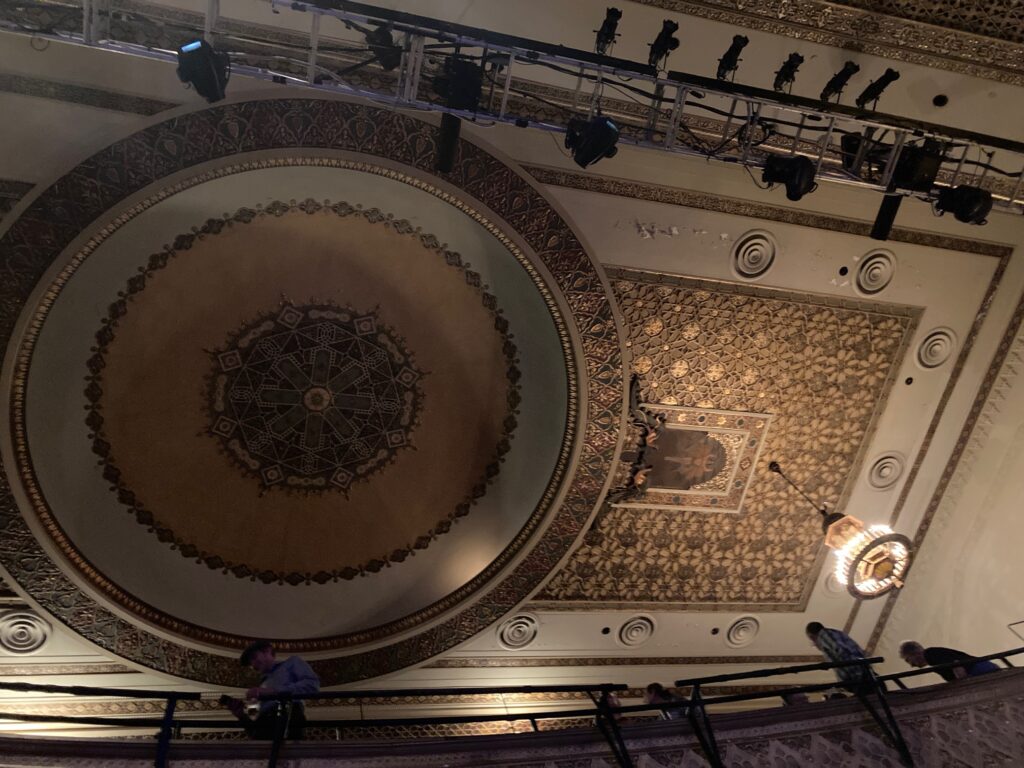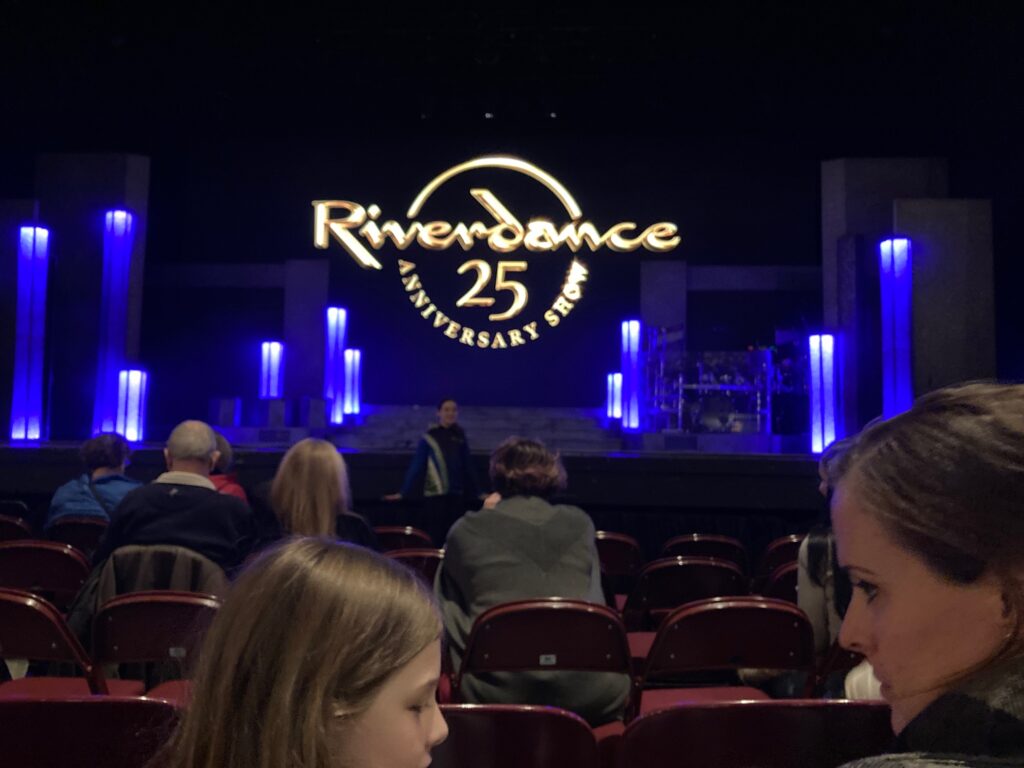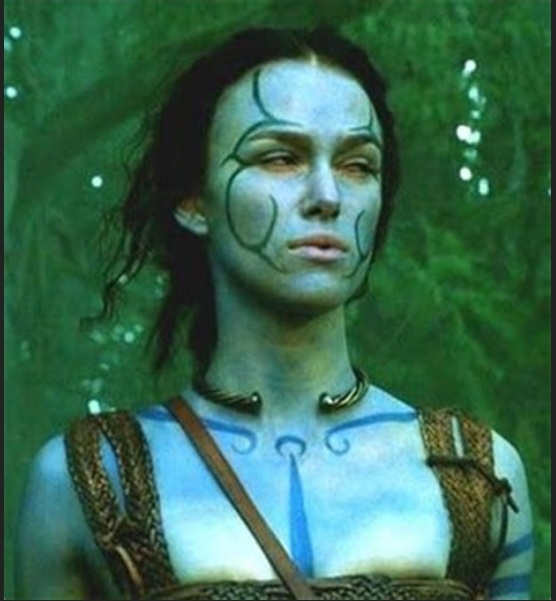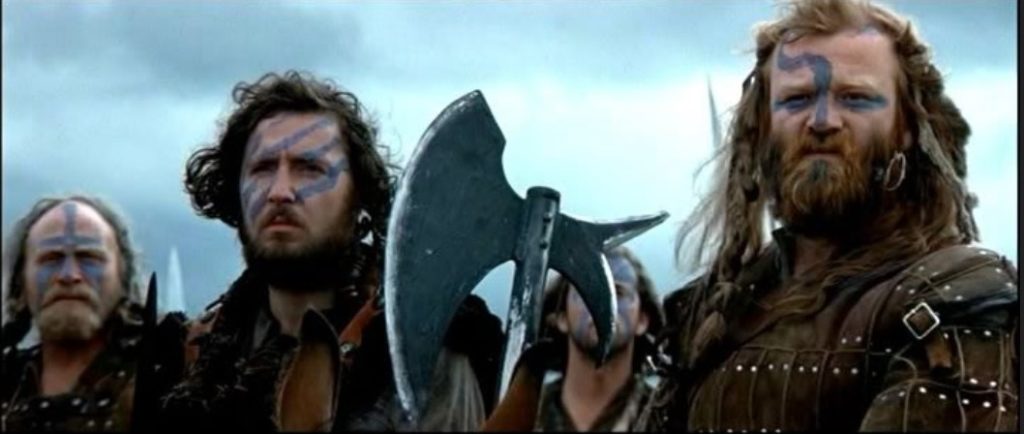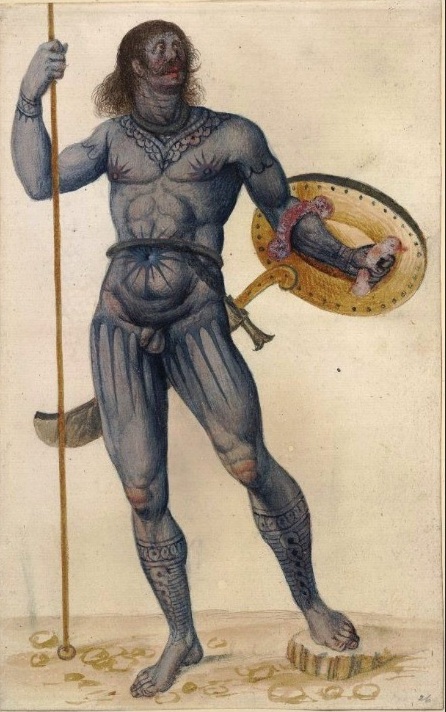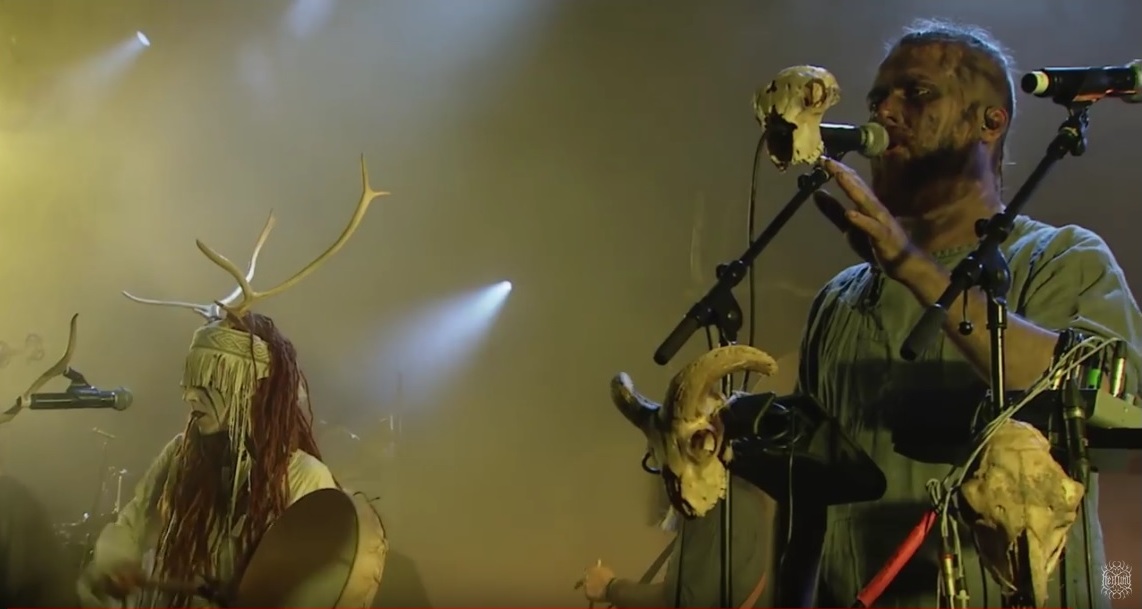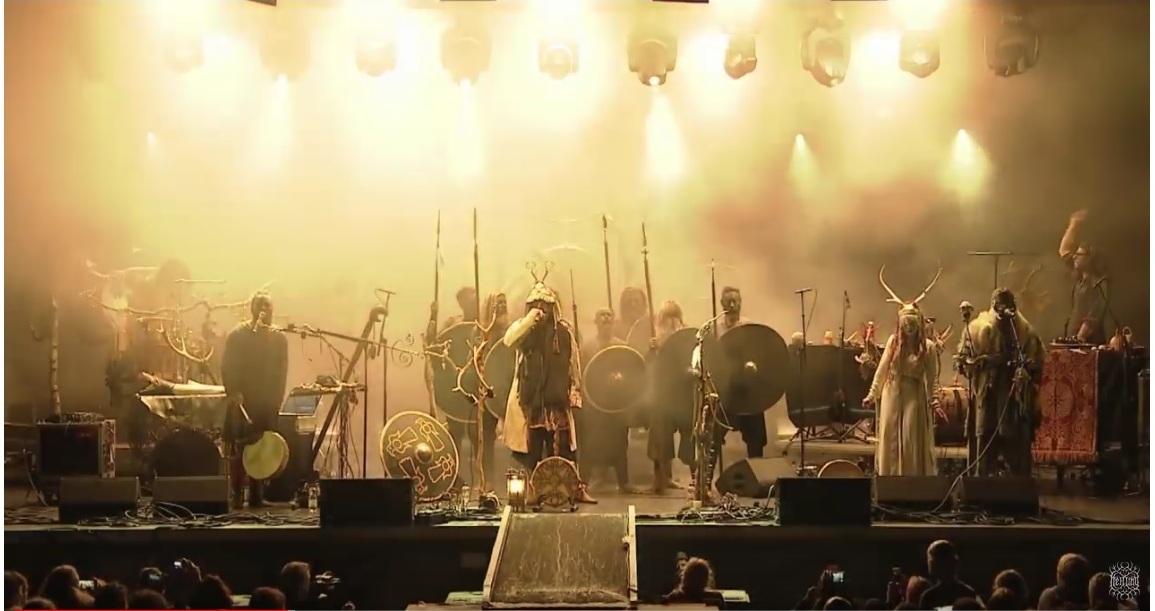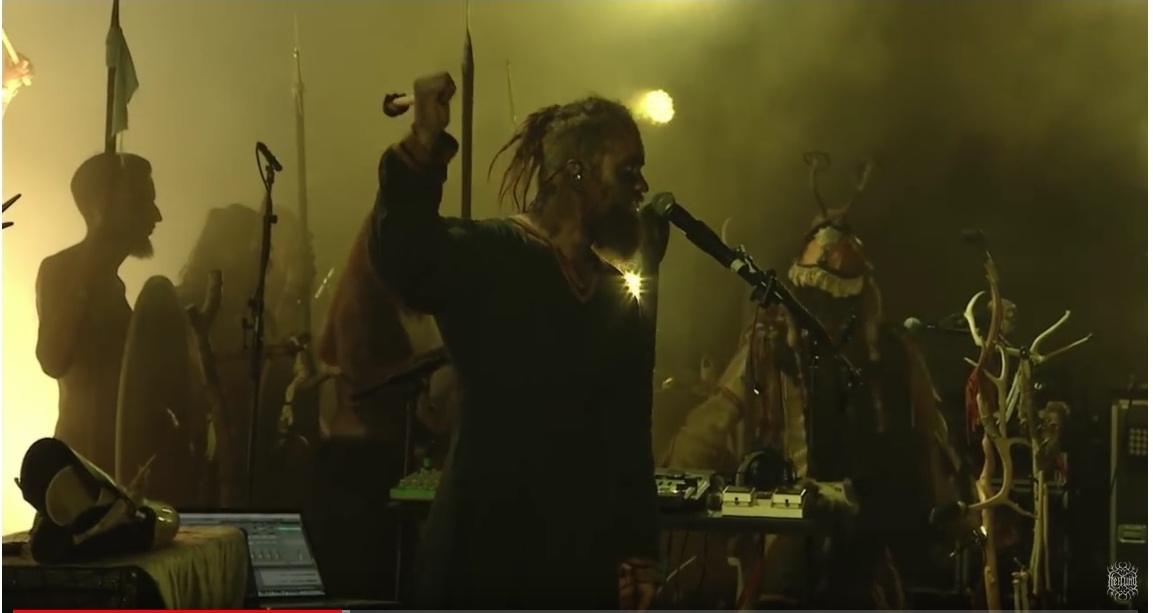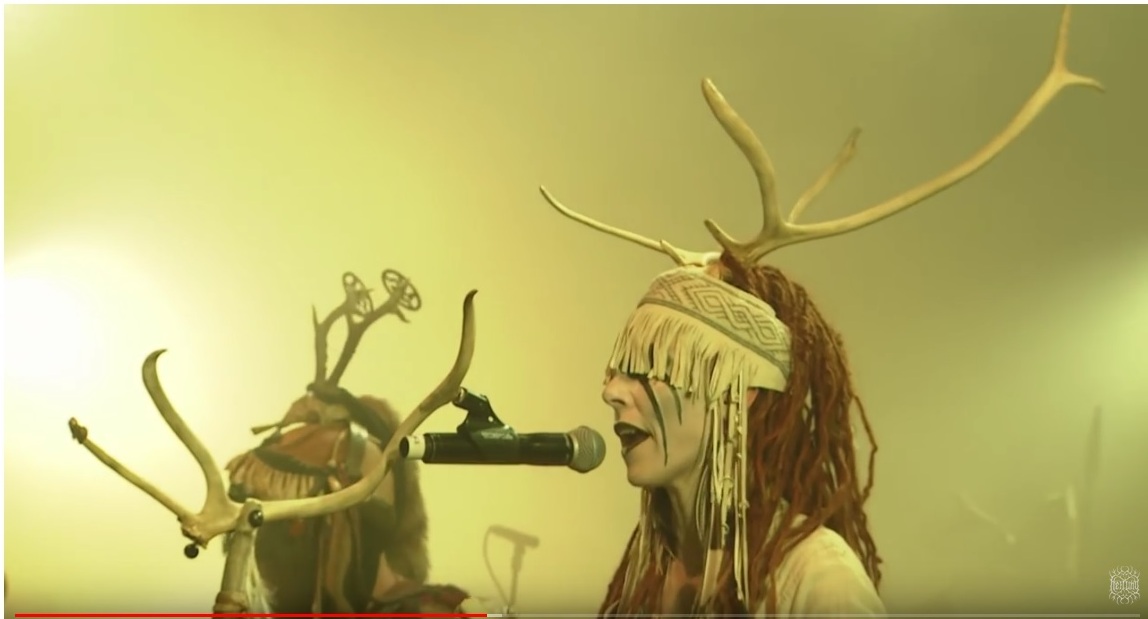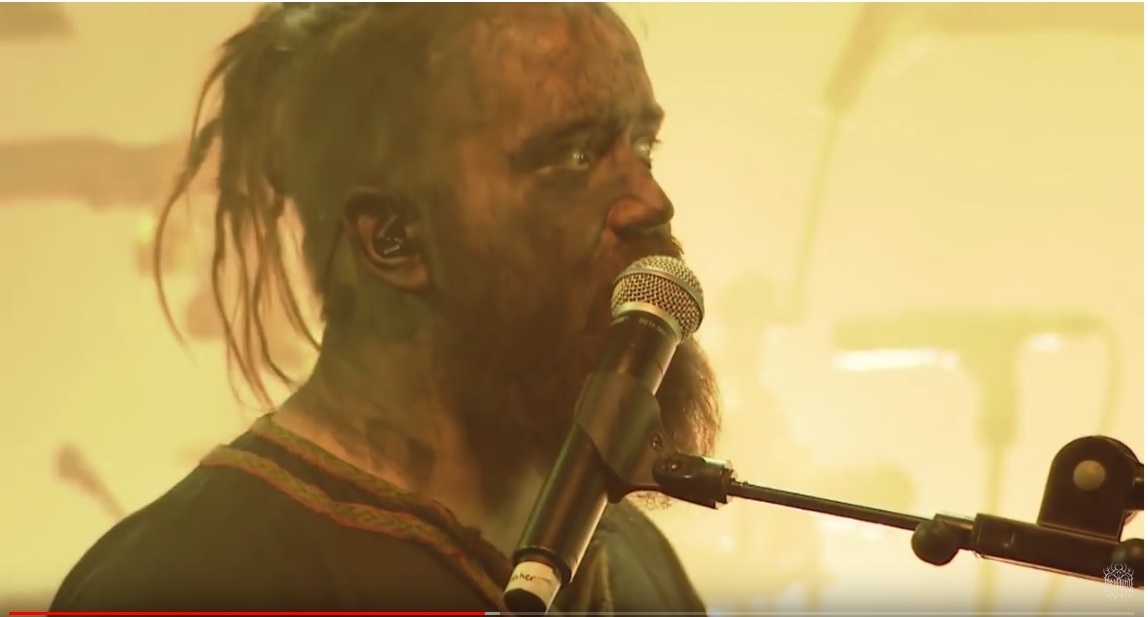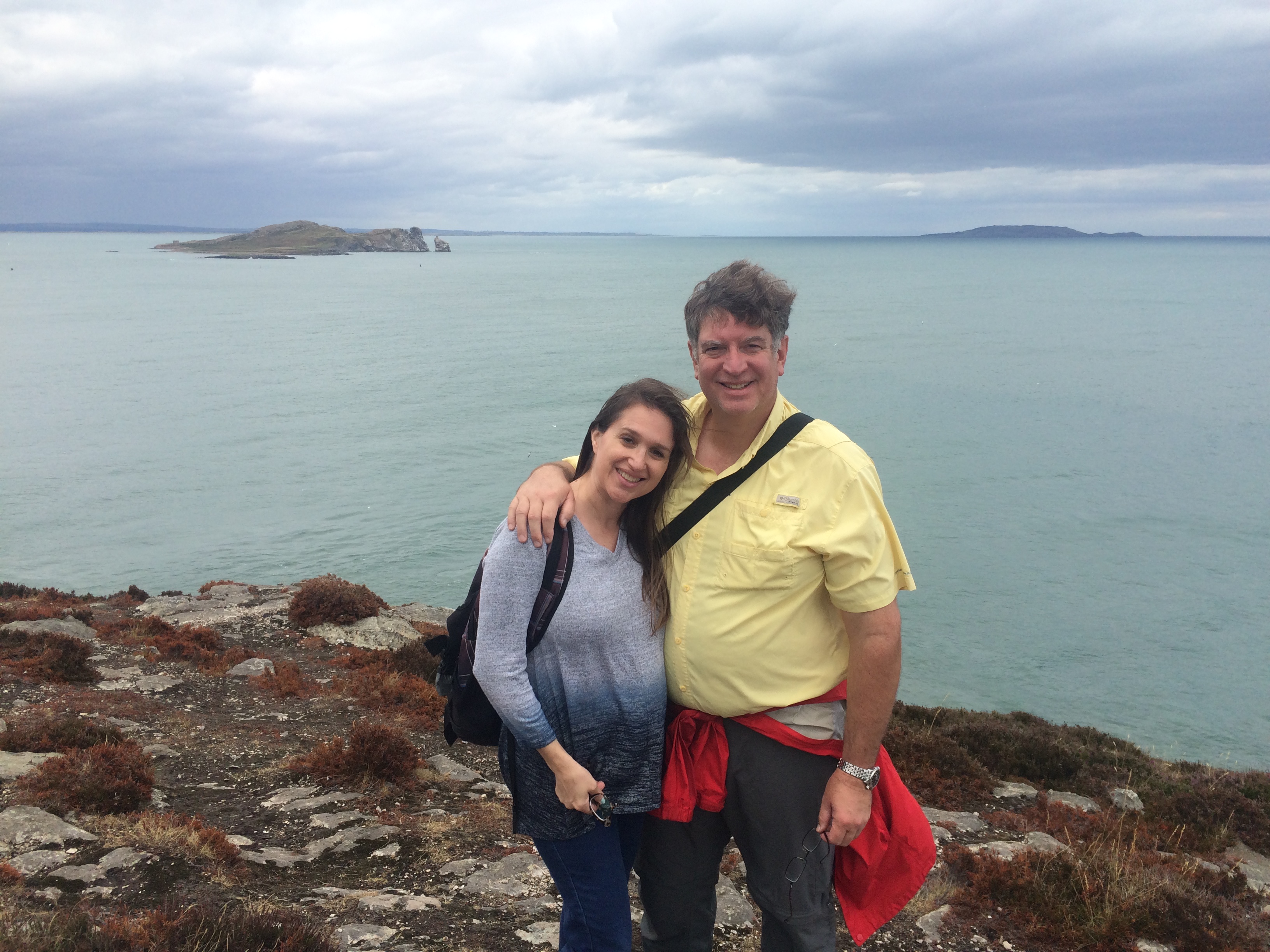Posts Tagged → Irish
Riverdance 25th Anniversary Show A+
Last night the Princess of Patience and I drove to Reading, PA, to watch the 25th anniversary show of the much celebrated Riverdance show that took western countries by storm 25 years ago. We enjoyed the show very much, especially the tap dancing part, which is the height of dancing talent.
The venue was the historic “Rajah” theater, now the Santander Performing Arts Center, in downtown Reading, Pennsylvania. The theater’s interior is nicely artistic and harkens to an earlier time in American history, when design and materials were stone, stained glass, crafted metalwork, and did not include ubiquitous bright neon and loads of plastic. Parking was abundant, whether on the street or in lots or in nearby parking garages.
Comfortably parking my fat butt in one of the old seats was another matter, and I tried to joke with the tall lady to my right whose elbow kept bumping into my arm. Or maybe my arm kept bumping into her elbow, with the result that each of us watched the show with one arm stretched across our chest to avoid discomfiting the other person. Point being that these are smaller seats and could use a few inches added to either side to comfortably accommodate larger, wider, broader bodied people. If you are pint-sized like the Princess of Patience, then you will be more than just fine. The venue was clean, tidy, well maintained, and had no weird old smells.*
Riverdance is fundamentally about Irish tapdance, or at least it was 25 years ago. Back then people commented that this kind of tap dancing was not really culturally Irish per se, but the fact is that it is its own thing and the people doing it and promoting it are mostly Irish dancing to lots of Irish music. So I call it Irish tap dance, and it is a lot of fun to watch. Beyond the outstanding tap dancing abilities of the individual performers, the audience is also entertained by the choreography and the perfectly executed timing of the performers as a troupe. Add in some Celtic-themed music, with Irish musical instruments like the Uillean pipes and drums, some traditional Irish style clothing, some songs sung in Gaelic, and you have the entire package. Excellent light show and dry ice fog for effect.
My favorite performance was the eight men executing some sort of intensely high energy quasi military exercise, with yelled commands from one to another. It was so perfectly timed and crisply done that the audience roared when they finished. Wow. Impressive!
My least favorite (as there is bound to be in almost every kind of theatrical performance) scenes are the singing. Because of the sound system, I can never tell if this is piped in and mouthed by the performers, or is, in fact, their own world class singing voices. I have my suspicions. The sole acoustical instrument scene was outstanding, but again, like the singing, sometimes it is hard to believe that the world-class fiddling is being done by the leaping nymph in front of me, and that it is not being piped in. No question that the percussion guy is incredibly talented. One request: Someone at some point in the show should wear some woad on his face, like Michael Flatley occasionally did. Show some true Celtic pride.
Probably the most entertaining dance routine was near the end of the show, when the backdrop (digital screen, as is standard now on stages almost everywhere) switched from the Emerald Isle countryside to a Downtown-to-Brooklyn B Train station and Manhattan cityscape, with a Hispanic guy and a black guy each doing their own ethnic styles of tap dance. Then the Irish guys enter in a mock-up of the old West Side Story confrontation, and the two groups have a series of dance-offs against each other using their different styles. And then of course they dance together. Lots of performer humor and mugging for the audience, as well as amazing dance, and the audience enjoyed it a lot.
I counted about thirty dancing performers and six musicians last night, and both the Princess of Patience and I felt like we had experienced a full evening of high talent entertainment. During intermission a bunch of little girls who had come to watch the show did their best Irish tap dance in one of the aisles, to lots of praise and cheering by the audience. And naturally, the entire audience was a sea of shades of green and various family green plaids and the famous Black Watch plaid, including tartan caps, shirts, coats, a kilt and sporran, and more than a few shilleileighs.
Riverdance 25th Anniversary Show is an A+ fun and impressive night out for anyone and any family. You will leave feeling energized and positive. When we first saw Riverdance decades ago, it was a kind of “If you weren’t Irish when you showed up, you will feel Irish when you leave at the end” experience. The updated version is truly a representation of America 2023, with plenty of Ireland’s best along with “culturally updated” themes that are fun.
*A note about the Santander Performing Arts Center: Like almost every other performing arts center I can think of, Santander Performing Arts Center does not allow its patrons to carry any defensive weapons on its premises. This means that patrons must disarm before entering the building, and then we exit into downtown Reading at night unarmed and vulnerable. Downtown Reading, PA, is not a safe place. The streets are dirty, trash is blowing around everywhere, and there are aimless or homeless people walking around, standing around, everywhere. When we entered this venue, we had to go through metal detectors carrying our keys and cell phones with our hands held high as if we were being detained by law enforcement. It is a humiliating experience. When I broached the idea to a security guard at the entrance of having lock boxes available inside the foyer to concealed carry people, he responded “That is an excellent suggestion, but it is never going to happen. With the current management never, it will never happen, I am sorry to say.” Which raises the questions of why these performing arts venues do this, and what responsibility do they have if you are mugged or beaten while approaching their building or after exiting it. Do they really have our safety at heart, if they disarm us and then turn us loose vulnerable on the city streets at night? I do not like being disarmed, especially when I do not see realistic alternatives being provided by the hosting venues.
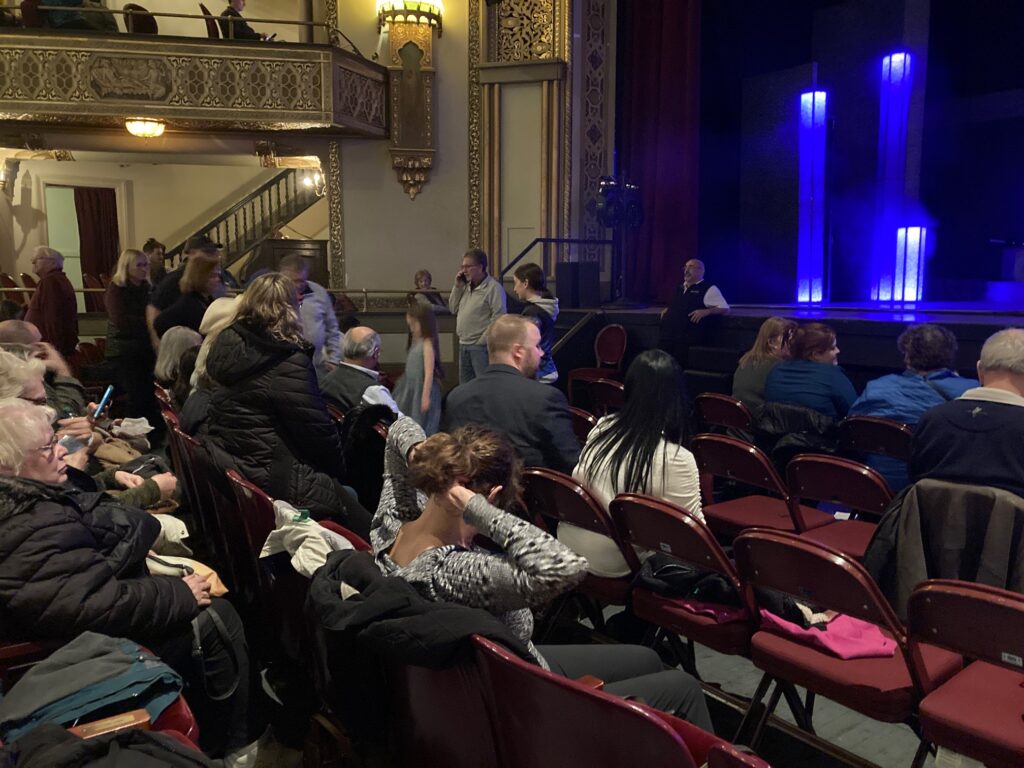
Intermission time, showing some kids tap dancing in the aisle, and showing some of the theater’s old crafted ornamentation
Purple woad. Or why hunting leases
Leasing land to hunt on is a big thing these days, and there is no sign of the phenomenon decreasing. Most of it is about deer and turkey hunting.
Hunting leases have been popular for a long time in states with little public land, like Texas, but the practice is now spreading to remote areas like suburban farms around Philadelphia and Maryland. So high is the demand for quality hunting land, and for just finding a place to hunt without being bothered, and so limited is the resource becoming, that leasing is a natural step for many landowners who want to get some extra income to pay their rent or fief to the government (property taxes aka build-a-union-teacher’s-public-pension-fund).
Having been approached about leasing land I own and manage, it is something I considered and then rejected. If a landowner at all personally enjoys their own land themselves, enjoys their privacy there, enjoys the health of their land, then leasing is not for you. Bear in mind that leasing also carries some legal liability risk, and so you have to carry sufficient insurance to cover any lawsuits that might begin on your land.
Nonetheless, some private land is being leased, having been posted before that. And the reason that so many land owners are overcoming the same hurdles that I myself went through when considering land leasing, is that in some cases the money is high enough. Enough people want badly enough to have their own place that they can hunt on exclusively, that they are willing to pay real money.
Makes you wonder what kind of population pressures and open land decreases America has seen over the past fifty years to lead to this kind of change in land use. Makes me think of one anecdotal experience.
On the Sunday of Memorial Day Weekend of 2007, I drove up to Pine Creek to dig the footers for our barn. All the way up I shared the road, in both directions, with two motorcyclists headed in my same direction. That is it. In addition to my pickup, a grand total of two vehicles out for a Sunday drive in the country were on Route 44 and Rt 414.
Fast forward 13 years and my gosh, Pine Creek Valley has nonstop traffic in both directions at all hours. It does not matter what the time of day or night is, there are vehicles going in both directions. And not just oversize pickup trucks possibly associated with the gas drilling occurring around the area. Little tiny dinky tin can cars are going up and down the valley, too. There are literally people everywhere here now, in what had been the most remote, undeveloped, quietest corner of rural Pennsylvania. Even if you go bear hunting on some sidehill in the middle of nowhere up in Pine Creek Valley, you will encounter another hunting gang or two. Which for bear hunting is actually a good thing, but the point being that there are people everywhere everywhere everywhere in rural Pennsylvania.
OK, here is another brief anecdote. Ladies, skip ahead to the next paragraph. About ten years ago I was fishing on the north end of the Chesapeake Bay. When I was finished for the day, I drove back north toward home. At one point I had an urge to pee, so I began looking for a place I could pull off and pull out, without offending anyone. Yes, I have my modest moments. And you know what? The entire region between The Chesapeake Bay’s northern shores and the Pennsylvania Mason-Dixon Line, is completely developed. Like wall-to-wall one-two-three-acre residential lots on every inch of land surface. At the one place that finally looked like I was finally going to get some relief, I stepped out of the car and was immediately met with a parade of Mini Coopers and Priuses driving by on the gravel road to their wooded home lots. There was literally people everywhere, in every corner, in every place.
So what happened here?
There are more people and there is more land development, both of which leading to less nice land to hunt, fewer big private spaces for people to call their own, and so that which does exist is in much higher demand.
Enter Pennsylvania’s new No Trespassing law. AKA the “purple paint” law.
Why was this new law even needed? Because the disenfranchised, enslaved Scots-Irish refugees who originally settled the Pennsylvania frontier by dint of gumption, bravery, and hard work had a natural opposition to the notions and forms of European aristocracy that had driven them here. Such as large pieces of private land being closed off to hunting and fishing. And so these Scots-Irish settlers developed an Indian-like culture of openly flouting the marked boundaries of private properties. Especially when they hunted.
And this culture of ignoring No Trespassing signs carries forth to this very day.
Except that now it is 2020, not 1820, and there are more damned people on the landscape and a hell of a lot less land for those people to roam about on. Nice large pieces of truly private land are becoming something of a rarity in a lot of places. Heck, even the once-rural Poconos is now just an aluminum siding and brick suburb of Joizy.
So in response to our collision of frontier culture with ever more valuable privacy rights, Pennsylvania now has a new purple paint law. If you see purple paint on a tree, it is the equivalent of a No Trespassing sign. And if you do trespass and you get caught, the penalties are much tougher and more expensive than they were just a few months ago.
And you know what the real irony is of this purple paint stay-the-hell-out boundary thing? It is a lot like the blue woad that the Celtic ancestors of the Scots and Irish used to paint their bodies with before entering into battle. Except it is now the landowner who has painted himself in war paint.
Isn’t life funny.
Still the chief of Celtic music: The Chieftains at 57
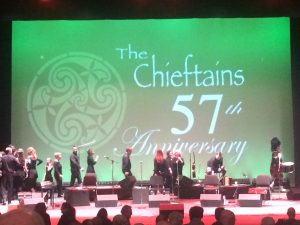
Local York Scots Bagpipers Brigade joined local York Chorale members and then audience members with The Chieftains and the Piltazke Brothers in a long snake dance that ended the performance
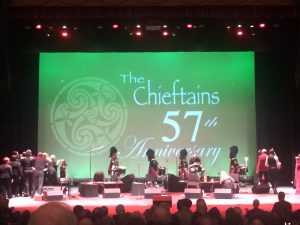
The local York, PA, bagpipers all dressed up in their Scottish tartans, participating with The Chieftains in a typical sharing of Celtic culture and music, to the audience’s delight
Last night the Princess of Patience and I ventured not too far down the road to the Appell-Strand Theater in York, Pennsylvania. It is a venue we have visited over the years for a variety of music types for the adults, and high-end children’s entertainment for the kids. It is a clean, pretty, historic place right in historic downtown York, easy to access, lots of free parking, and when you are done, it is easy to leave. Fellow patrons are easy, chatty, friendly, happy, and the lady I sat next to, a Lori Sims of Hanover, PA, cheerily shared gardening tips with me and disclosed her yearning for Spring to finally arrive so her garden could get under way. Then again, no wonder: she has a TWO-ACRE GARDEN.
What we witnessed last night is one of those rare moments where, if you have been lacking in faith in humanity for whatever reason, it would be restored immediately. We watched The Chieftains do what they do best: Play sweet Celtic music combined with amazing Irish dance, and incorporating local talent in a pub-like atmosphere of fellow music chums just kind of jamming along with each other in the spirit of the moment. It would be the best of what you would find at the Temple Bar today.
So here is Chieftains founding father, Paddy Moloney, who must easily be in his 80s, alternately playing both the chipper and then humorously gruff oldster commenter, as well as his own penny whistle and Irish pipes: “Oh sure, ya show-offs,” as the Pilatzke Brothers perform amazing amazing amazing Irish tap dance routines that leave the audience exhausted from the intensity and skill. Serious world-class talent.
Now in 2019, The Chieftains are celebrating their 57th anniversary. Think about that. Fifty-seven years as inspiring performers of not just music, per se, but keepers of traditional culture, Gaelic language, ancient musical instruments, and the music and the rural, undeveloped, natural Irish landscape that binds all that together. It is quite a gift to all of us that they provide. At 57 years of live musical-cultural performances, The Chieftains are an institution, a world heritage institution.
Despite having a stack of Chieftains CDs, I can never really get enough of them, and last night my mind drifted back to one evening in the summer of 1992, during the Celtic Festival at Wolf Trap, in Virginia. The Princess of Patience and I were about to be engaged to be married, and our long-time friend Lori encouraged us to join her at Wolf Trap for that evening. The weather was perfect, the music was perfect, the musicians and performers were perfect, our snacks and wine were perfect, the audience was rapt and enthusiastic. It was all quite perfect. And there they were, now 27 years ago, The Chieftains up on stage, looking a hell of a lot younger than now, and probably having a few more teeth then than now. But still flawlessly performing the same beautiful, inspiring music.
That was the same evening I heard the best-ever joke about the bagpipes, and it is a surprisingly unknown quip, because whenever I pass it along, people respond with great mirth, as if they have never heard it before. I will disclose it here, because I know the three people who read this blog have zero interest in Celtic anything and they will immediately forget this secret to being the star at any dinner party attended by Irish or Scots.
This joke arose as an Irish pipes player dueled with a bagpipes player on stage that evening at Wolf Trap. When played correctly, the Irish pipes are of course the most heart-tugging sound the human ear will encounter. Squared off against the blaring, loud, military-oriented bagpipes, the Irish pipes are like a gentle, sweet whisper versus an aggressive, loud shout.
So after their duel on stage, during which he had played the most mournful, beautiful, inspiring sounds, the Irish pipes player said to his Scotsman counterpart: “You do know, the Irish gave the bagpipes to the Scots. And the Scots never got the joke.”
Cue uproarious audience response and a big grin from the Scotsman. Audience participation in Celtic music is expected, and it is given, as is good-natured banter among the performers.
So, on that same beautiful summer eve 27 years ago, into this good-natured banter with Celtic music and culture stepped The Chieftains, playing with humble passion on the stage at Wolf Trap. And literally over twice as many years later, The Chieftains are still chief, tops among Celtic bands. Thank you for a wonderful night of happy moment after happy moment, guys. Cheers to you, Paddy Moloney, may you see a hundred years, ’cause God knows, why not, you about look it already.
Celebrating Whiteness, with Antlers and Runes
As much as real, tangible racism was in free fall and thankfully a long way out of style throughout America and Europe, Liberals could not live without it, and so they brought it back and breathed life into it like a Frankenstein monster. Newly created by the past president, Black Lives Matter is “the Klan with a tan.”
Racism and race consciousness (they are the same) is a powerful accelerant for liberals’ ever-offended victimhood, and a driver of demands for coercive Marxist “social justice” wealth redistribution and forced equal outcomes (not equality via equal opportunity, which is meritocracy).
Put another way, racialism is a powerful drug. Take a racial supremacy pill and you are on top of the world, feeling good about yourself simply for existing inside your own skin color; but take a racially aggrieved pill along with the first pill and you are ready to lay waste to the world in the name and image of your skin color. You feel personally righteous and motivated. Witness the BLM and ANTIFA street violence, the murderous hate of Jeremiah Wright’s followers, neo-Nazi Storm Front. True jihad.
For every Yin there is a Yang.
For every action there is an opposite and equal reaction.
For every black supremacist Louis Farrakhan and BLM kook and tone deaf NAACP functionary, there is now or will end up being a Neo Nazi or sympathizer, just as equally filled with foolish hatred, racialist supremacy, and racial grievance as their mirror image.
I do not know what “white” skin is, and neither do the strongest proponents of “whiteness” nor its enemies and modern creators, the black supremacists like Black Lives Matter, Louis Farrakhan, Democrat leader Keith Ellison, or celebrated jihadia Linda Sarsour, et al.
There is simply no quantifiable or operational definition for whiteness, or blackness. But racism’s artificiality does not stop people from using racist ideas for political gain or personal aggrandizement.
A recent vacation trip through several once-sovereign nations in Europe showed that, like America, most “whites” there have accepted the idea that racist/racialist discrimination is a bad thing. This is a repeated empirical observation where one meets a friendly young mixed race German couple: the She is milk chocolate brown, herself of racially mixed parentage, and the He is a supremely blonde and genuinely “white” Teuton, what we jokingly refer to as the ‘Hitler Jugen’ in our own family. Together they are happily affectionate and in love, oblivious to the artificial divide that Black Lives Matter demands of them.
Repeat this scene a thousand times, as we did across the three nations, and the takeaway lesson is that the “whites” got it; they got the memo on being racially accepting. It seems they are alone, however, as the pendulum is swinging the other way now, driven by BLM’s fake racial grievance industry, enabled by the establishment media, as well as South Africa’s latest non-news African anti-Caucasian genocide.
An interesting child born of the Left’s destructive efforts to artificially separate humans, break them out, and pit them against one another along skin color lines are those Caucasians returning to early Norse language, religion, and identity. Now this is really, honestly, truly Caucasian in every way, and if you had to point to something and say “Yeah, this is what we would call ‘white’,” this would be it.
It is an affirmation of historic roots.
It is not symbolic of Aryan supremacy. Yet.
Fascinatingly and in a way frighteningly, because it is so contrary to America’s Biblical idea of color-blindness, which I myself exalt (even in the face of BLM and NAACP racism), this is something quietly growing in the shade between the glaring extremes of BLM and Storm Front’s 21 marching members. It is this truly authentic “white” identity, increasingly celebrated in real song and historically accurate, authentic costume, rooted in Scandinavia, Dane-Land, Germania, the true home area of Caucasian “whites.”
These resurrected ancient symbols send a strong signal to modern lost souls; a chill up the spine tells them they are back home, after a long absence.
These are Caucasians working their way back to a proto-Caucasian, pre-Christian tribal identity, something organic with and naturally arising out of the Western European and Scandinavian landscape, even before Beowulf. It is very much a part of their DNA heritage. At least of what they know of it, or think they know of it. But that is enough for this new identity.
This nascent identity movement ironically started with the 1980s nativist Celtic music revival. But it is now its own thing, complete with a signature public face, a highly literate music style based on old Norse poetry and Viking history, Old High German and Old Danish literature and myths, the use of runes, and native music emitting from natural Iron Age objects, plants, and animal parts. And those totemic tattoos!
Call it “Viking Rock.” Their musical style is a big Viking tent, encompassing chants, to entirely primitive instruments, to electronic everything, and all of that together. One thing for sure, it is energetic, mostly aggressive, very much a product of the Norse beginnings. We know this from archaeology and history.
With this activity we are approaching a clearer and more honest “white” identity that is probably irrefutable, if also unnecessary in my happy, peaceful, color-blind American life. Shallow Storm Front, it ain’t.
We had thought the Vikings were all buried in the shallow inland sands of the North Sea and the barrows and dolmens of England, and now today seen only in documentaries, but in fact they walk among us once again. An entire genre of music, language, religion, exemplified simply by old Norse tattoos, are emerging from Europeans participating in their own natural, organic responses to artificial demands of racial identification.
Perhaps the most visually gripping band is the newest, Heilung (and photos and music videos below).
Early Caucasian people did and said and danced and wrote and sang these things playing out on stage, while today in America we barbecue outside and throw a baseball to relax, instead of beating war drums.
Where this goes is anyone’s guess. Neo-Nazis have already tried to claim some of this turf, now harkening to Odin for aid and comfort and decrying Christianity as a ‘Jewish plot’. But there is a tremendous amount of well-intentioned bleed-over into fascinated onlookers and others justifiably fed up with being told over and over that they are racist bad people simply because of their skin color, or lack of it. Other adherents are just fed up with modern materialism and consumerism, and are looking for what can only be called authenticity. This movement is going to take hold and sink roots in different places.
If we must view this ‘PaleoScando’ style as something purely racial, then one question that immediately comes to mind is this: Can the other “whites,” i.e. the Irish, Scottish, English, Welsh, Spanish, French, Portuguese, and Eastern Europeans also participate in this Viking celebration of whiteness? What if you are a typical American and you have a bunch of German, Austrian, and Irish DNA floating around in your veins? Under white racialism, these Celtic and Saxon strands are at war with one another. Do they cancel themselves out? Do you then cease to exist as a racial symbol? Should you be taken to a remote place and shot, or gassed, thereby removed from the gene pool? Or should you just shoot yourself?
A recent DNA-driven facial reconstruction of the 9,000-year-old “Cheddar Man” skeleton from southern England (near Stonehenge) gave him black skin and blue eyes, with a definitely unmistakable Irish mug. An Irishman with a deep tan. But wait, aren’t the Irish and English white?
Do any of these people above also qualify as ‘white’? Should they also be celebrating their whiteness with the modern Vikings? Or are they just onlookers, or cheerleaders, or cannon fodder and stepping stones?
The movement’s music and visuals are powerfully suggestive, and moving. If the Vikings and their incredibly creative, powerful, often merciless successful descendants were any indication, this movement will go somewhere. Hopefully it goes for good. God, I hope for good.
Some representative examples:
“Krigsgaldr” (“War-Magic,” a song or play about cruel Vikings getting some payback)
Fairy Forts: Being Truly Green, and Emerald
On a really neat hike around Howth, Ireland, guided by a really neat guy named Mark, I was introduced to the weird world of Irish politics two weeks ago.
Just two weeks before I had an even stranger introduction to Irish politics, when at the Yuengling beer plant tour in Pottsville, PA, a little Irishman with a big Brogue said to me “Yer nawt Oirish, becauz yew doon’t leev ‘n Ireland, and I’m nawt Oirish becauz ah leev ‘n Northr’n Ireland.”
The little master was quite assertive in his girly long shorts (thankfully these have not yet arrived in America) and me, for the first time in my life not knowing what to say and how to not say it, I simply said “Brother, you need another beer.”
And yes, he did drink another beer. Guess that meant he’s not really Irish…
So two weeks later on Howth, I described this encounter to our guide Mark, himself of Belfast like the non-Irish Irishman in the girly pants, but Catholic, and he responded like a PhD historian.
To wit: After 750 years of English occupation, colonization, violence, repression, uprisings, death, mayhem, chaos, cultural suppression, etc., the Irish are still sorting a few things out now that the English are mostly out.
The idea that an Irishman from Belfast is not really an Irishman is to me, like, I don’t know, let me think of something incongruous, well, it is like finding out something so incredibly outlandish that your whole world view goes topsy turvy for a week. That was the effect.
But Mark said matter of factly “Oh yeah, that is the mentality and attitude up there [Belfast], and that is why I left to come down here [Dublin].”
You would probably have to live there over a few lifetimes to figure it all out, because just as I was starting to comprehend the political and cultural dynamic of Northern Ireland, Mark then went on to describe Irish MP Danny Healy-Rae in the way someone from some deep urban ghetto cloister in New York City or Los Angeles would describe a rural NRA member farmer in flyover country.
It was not pretty, but hey, who am I to judge, and I just sat and nodded along. Mark was an excellent guide and passionate about his homeland and his happy life there. I can relate, and so like I said, I just nodded along.
Danny Healy-Rae is probably all alone in his singular rural style of political representation the world-over. Despite having a lot of rural areas and a lot of fired-up rural people, I do not think America has anyone like him in politics. Danny Healy-Rae is both principled and colorful, with a straight face.
The incredible irony of Danny Boy’s place on the political spectrum was totally lost on Mark, who only moments before was explaining Irish politics very cogently, and advocating for new roads in the deepest rural areas as “progress.”
See, Danny Boy objects to new roads being built through really rural areas, especially those places that have “fairy forts.”
Yes, fairy forts. Wonder if you will, laugh if you must, but the man is indeed worried about how new roads will destroy or impact ancient fairy forts. Setting aside the rural traditions and folklore about fairies and fairy forts (and I do tend to side with both Native American Indians and Native Irish on their spiritual sensitivities to real things in the natural world that city folk aka Town Mice completely miss), fairy forts are real.
A week after Mark had explained Irish politics so clearly to me, we visited Stonehenge.
Have you gone there? Stonehenge is literally surrounded by fairy forts. Lots of hill forts and burial mounds and mystery places clearly built by the ancients for mysterious purposes that were really important to them and unattainable to us desensitized moderns. I was not expecting this side of Stonehenge, and it turns out it’s the presence of all those hill forts and mounds that make the big Stonehenge rocks so important.
After seeing this unexpected oddity in person, I looked up “fairy forts” and read most carefully this one (of several) reference. Naturally the Irish ones came to mind first, because of the footage of Danny Boy talking about Fairy Forts in Ireland’s parliament.
Archaeologically a “fairy fort” is a fascinating historic remain, and it’s evident why the ‘hick’ locals in all these places both revere and fear them. The English seemed to have plowed theirs extensively, which is very bad from the view of the historian, archaeologist, or Druid.
Turns out that Danny Boy is not only concerned about new roads destroying Fairy Forts, but he is also publicly concerned about the explosion of rhododendron in rural Ireland.
Now as much as Mark mocked Danny Boy’s unpersuaded opinions about man-made “climate change” (like Danny Boy, I too am unpersuaded by the heavily politicized, faked data behind the mere statistical models purported to be and shouted to be irrefutable “science”), Mark admitted he did not know the flora and fauna subjects along our beautiful walk on Howth. Nonetheless, he mocked Danny Boy over the rhododendron thing, too.
That flora issue includes the tidal wave of invasive plants moving in on the beautiful Irish countryside. That would also include rhododendron, and you will not find a bigger faunal representation of imperial Victorian England (something Mark is very much opposed to) than the various copses of rhododendron planted and quickly spreading from one end of the Empire to the other.
In other words, Danny Boy is objecting to invasive rhododendron for environmental and cultural reasons, things that his detractors say they care about, and his supposedly proud Irish compatriots are mocking him about it. They mock him simply because he comes across as a hick, not because they actually know better than he or care more for the environment than he.
I think this hillbilly Irishman MP, Danny Healy-Rae, should get a lot more credit from his fellow countrymen than he has thus far received. At first I thought he was just an aggressive environmentalist trying to keep roads and invasive plants out of undeveloped Paradise. Now I think he’s also a keen historian!
We will return to Ireland. Several other friends and friendly couple friends of ours were simultaneously touring Ireland when we were there, and between us all we all pretty much covered the whole country by car, bike, kayak, and foot. The collective photos we all took showed Ireland in all its splendor. What a beautiful, unspoiled, undeveloped, magical place is Ireland.
Turns out that Ireland, the whole entire place, is one big beautiful, magical fairy fort!
We are coming back, and we hope that Danny Boy has succeeded in diverting the roads, protecting the fairy forts, and uprooting the rhododendron. Mark, you will have to come with us, because I think you should see Ireland through our eyes. It might help you better appreciate the incredible natural beauty you have.
And this next trip might help us all better figure out Irish politics, because as we can see with Danny Boy vs. the liberal Irish, Irish politics are a complete mess where up is down and left is right. When you have liberals advocating for environmental destruction and keeping the symbols of imperial England, and the conservatives opposing them are the greens, things are just not yet sorted out.
That’s the best way to put Ireland. It just isn’t yet sorted out. But it is beautiful, thanks to the fairy forts.
Howth and the “Eye of Ireland”:
Everybody is Irish today
Americans celebrate a multitude of holidays. Some are religiously based, some are ethnic, some are historic, and some are just fun.
Today is Saint Patrick’s Day, a holiday we borrowed from Ireland and made even better. In Ireland, St. Patrick’s Day has a load of religious meaning, which is fine, and yes, they have some festive public drinking to lend a celebratory air to it.
But here in America, we celebrate St. Patty’s Day as if every American is a little Irish, as indeed many, even most, are.
And that is important, because the Irish were among the very first slaves brought to America, and even as freed men they helped build this incredible nation, knowing that they had as much a share in it as anyone else. Coming from a place – Ireland – where Catholic Irish had their lands stolen on a whim, and where Catholics could be shot on sight just for the fun of it, any place was better.
Irish pluck, Irish luck, Irish humor, Irish fierceness…all are key ingredients in America’s success today. So here’s to the Irish today, and of yesterday, and to all of us Americans. We owe ye much, lads! Today we are all a little bit o’ Irish, just by being Americans.
Some Westerners still adore Imperialism despite their protestations
If there is one hotbed of kooky political extremism in Western Civilization, it’s England.
As it was in the 1920s and 1930s, England is full of self-proclaimed “peace” activists and anti-imperialism yellers and screamers.
Their weak righteousness brought on World War II, and paved the way for massive treasonous infiltration of English government at all levels.
Many Soviet Russian spies were warmly welcomed by these activists to set up shop and undermine the individual rights and liberties that mark the strongest European democracy.
Anti-British sentiment ran and still runs quite deep in Wales, Ireland, Scotland, the Falklands, and many other far-flung places unassociated with England proper.
Yet where were those activists then, when those nations next to England yearned for their own self-determination? Sure, the activists accused everyone else (America, Israel, the actual anchors of Western freedom and tolerance) of vicious imperialism, but they themselves loved the unfair, artificial, imperialistic, forced notion of a UK. Scotland, Ireland, Wales were independent places with unique languages, cultures, and religions. They were hardly “united” with England by choice.
The Falklands? WTH?!
Why now that Scottish citizens are finally waking up to their own freedom are the British trade unions, left wing activists, and self-appointed bosses of equality silent on Scotland’s chance for true opportunity?
I’m not Scottish, Welsh, nor Irish, I am an American, but I do know that my country fought British imperialism many times, and that Americans greatly benefited from their Constitutional republic’s individual liberties.
It is time for Britons to act in a consistent, civilized way, and set aside their imperial self-interests.
As a former Scottish freedom fighter once said on film, FREEDOM!
Remembering neat people, Part 1
A lot of neat, interesting people have died in the past year or two, or ten, if I think about it, but time flies faster than we can catch it or even snatch special moments from it. People I either knew or admired from afar who changed me in some way.
There are two men who influenced me in small but substantial ways who I have been thinking about in recent days. One of them died exactly ten years ago, and the other died just last year. Funny how I keep thinking about them.
It is time to honor them as best I can, in words.
First one was Charlie Haffner, a grizzled mountain man from central Tennessee. Charlie and I first crossed paths in 1989, when I joined the Owl Hollow Shooting Club about 45 minutes south of Nashville, where I was a graduate student at the time.
Charlie owned that shooting club.
Back before GPS, internet, or cell phones, the world was a different place than today. Dinosaurs were probably wandering around among us then, mmm hmmmmm. Heck, maybe I am a dinosaur. Anyhow, in order to find my way to the Owl Hollow club, first and foremost I had to get the club’s phone number, which I obtained from a fly fishing shop on West End Avenue. Then I had to call Charlie for directions, using a l-a-n-d l-i-n-e, and actually speaking to a person at the other end. You’d think it was Morse Code by today’s standards.
After getting Charlie on the phone, and assiduously writing down his directions from our phone conversation, I had to use the best map I could get and then drive way out in the Tennessee countryside on gravel and dirt roads. Trusting my directional instincts, which are good, and trusting the maps, which were pretty bad, and using Charlie’s directions, which were exactingly precise, I made my way through an alien landscape of small tobacco farms and Confederate flags waving from flagpoles. Yes, southcentral Tennessee back then, and maybe even today, was still living in 1865. Not an American flag to be seen out there by itself. If one appeared, it was either directly above, or, more commonly, directly below the Confederate flag. The Confederate flag shared equal or nearly equal footing with the American flag throughout that region.
Needless to say, when I had finally arrived at the big, quiet, lonesome gun range in the middle of the Tennessee back country, the fact that I played the banjo and was as redneck as redneck gets back home didn’t mean a thing right then. Buddy, I was feelin’…. Yankee, like…well, like black people once probably felt entering into a room full of Caucasians. I felt all alone out there and downright uncomfortable. And to boot, I was looking for a mountain man with a deeeeep Southern drawl, so it was bound to get better. Right?
Sure enough, I saw Charlie’s historic square-cut log cabin up the hill, and I walked up to it. Problem was, it had a door on every outside wall, so that when I knocked on one, and heard voices inside, and then heard “Over here!” coming from outside, I’d walk around to the next door, which was closed, and I would knock again, and go through the process again, and again. Yes, I knocked on three or four of those mystery doors before Charlie Haffner finally stepped out of yet one more doorway, into the sunshine, and greeted me in the most friendly and welcoming manner.
Bib overalls were meant to be worn by men like Charlie, and Charlie was meant to wear bib overalls, and I think that’s all he had on. His long, white Father Time beard flowed down and across his chest, and his long, flowing white hair was thick and distinguished like a Southern gentleman’s hair would have to be. And sure as shootin’, a flintlock pistol was tucked into the top of those bib overalls. I am not normally a shy person, and I normally enjoy trying to get the first words in on any conversation, with some humor if I can think of it fast enough. But the truth is, I was dumbfounded and just stood there in awe of the sight before me.
Being a Damned Yankee, I half expected to be shot dead on sight. But what followed is a legendary story re-told many times in my own family, as Charlie (and his kindly wife, who also had a twinkle in her eye) welcomed me into his home in the most gracious, witty, and insightful way possible.
Over the following two years, I shot as much as a full-time graduate student could shoot out there at Owl Hollow Gun Club, which is to say not as much as I wanted and probably more than I should have. Although my first interest in guns as a kid had been black powder muzzleloaders, and I had received a percussion cap .45 caliber Philadelphia derringer as a gift when I was ten, I had not really spent much time around flintlocks. Charlie rekindled that flame in me there, and it has burned ever since, as it has for tens of thousands of other people who were similarly shaped by Charlie’s re-introduction of flintlock shooting matches back in the early 1970s, there at Owl Hollow Gun Club.
Charlie died ten years ago, on July 10th, I think, and I have thought about him often ever since: His incredible warmth and humor, his amazing insights for a mountain man with little evident exposure to the outside world (now don’t go getting prejudiced about mountain folk; he and many others are plenty worldly, even if they don’t APPEAR to be so), his tolerance of differences and willingness to break with orthodoxy to make someone feel most welcome. Hollywood has done a bad number on the Southern Man image, and maybe some of that negative stereotype is deserved, but Charlie Haffner was a true Southern gentleman in every way, and I was proud to know him, to be shaped by him.
The other man who has been on my mind is Russell Means, a Pine Ridge Sioux, award-winning actor, and Indian rights activist who caught my attention in the early 1970s, and most especially as a spokesman for tribal members holed up out there after shooting it out with FBI gunslingers.
American Indians always have a respected place in the heart of true Americans, and anyone who grew up playing cowboys and Indians knows that sometimes there were bad cowboys who got their due from some righteous red men. Among little kids fifty years ago, the Indians were always tough, and sometimes they were tougher and better than the white guys. From my generation, a lot of guys carry around a little bit of wahoo Indian inside our hearts; we’d still like to think we are part Indian; it would make us better, more real Americans…
Russell Means was a good looking man, very manly and tough, and he was outspoken about the unfair depredations his people had experienced. While Means was called a radical forty years ago, I think any proud Irishman or Scottish Highlander could easily relate to his complaints, if they or their descendants stop to think about how Britain had (and still does) dispossessed and displaced them.
Russell Means played a key role in an important movie, The Last of the Mohicans. His stoic, rugged demeanor wasn’t faked, and he was so authentic in appearance and action that he easily lent palpable credibility to that artistic portrayal of 1750s frontier America by simply showing up and being there on the set. Means could have easily been the guy on the original buffalo nickel; that is how authentic he was.
Russell Means was representative of an older, better way of life that is disappearing on the Indian reservations, if that makes any sense to those who think of the Indian lifestyle that passed away as involving horses and headdresses. He was truly one of the last of the Mohicans, for all the native tribes. Although I never met you, I still miss you, and your voice, Mr. Means.
[Written 7/23/14]
